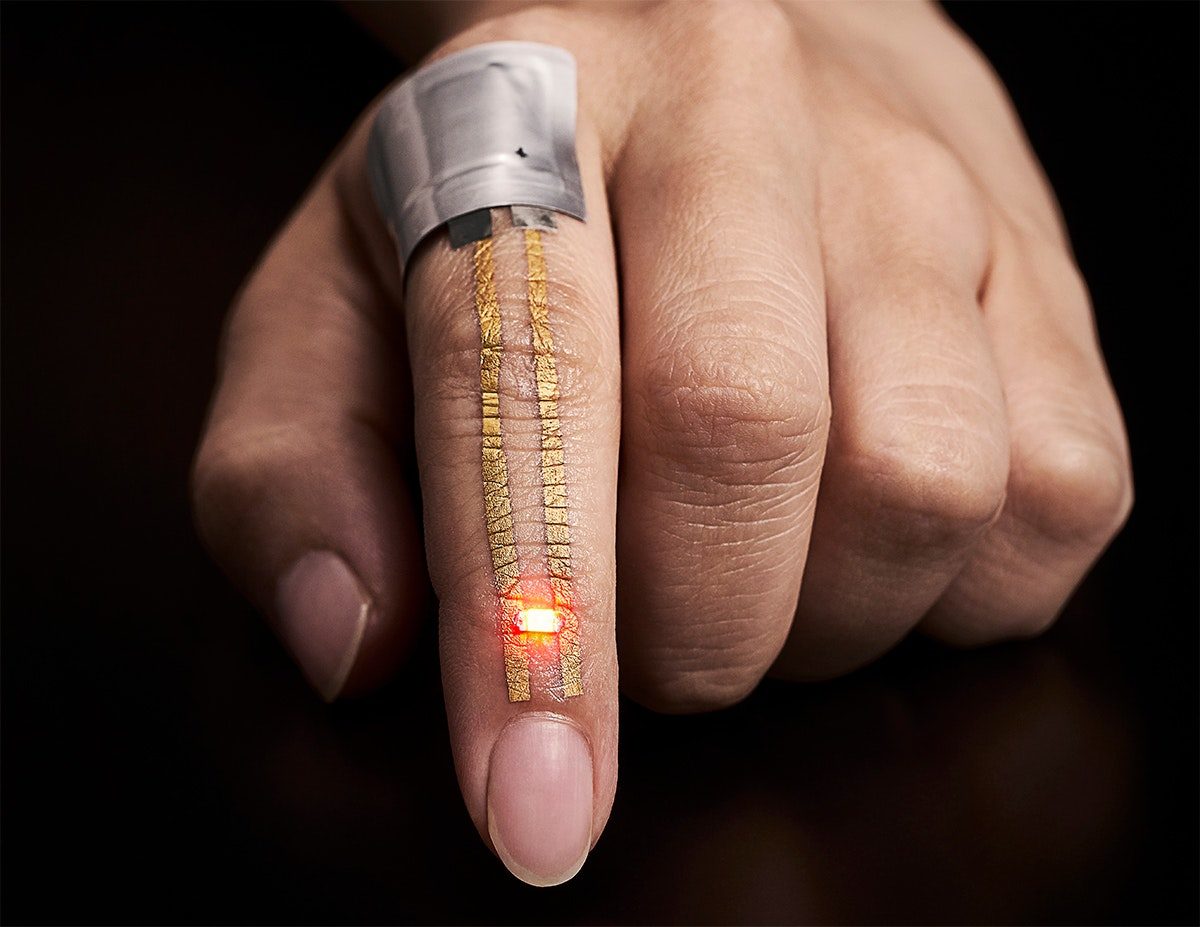
Measuring changes in the skin is useful in many physiological and health-related scenarios - for example, for monitoring a person's heart health, skeletal muscle behaviour and brain function.
Previously the technology required for skin monitoring has been bulky and impractical, restricting natural movement and changing the way skin interacts with environmental factors like air and moisture.
Now a team of researchers led by Akihito Miyamoto at the University of Tokyo have unveiled an innovative solution, straight out of a science-fiction movie.
A flexible, mesh-like structure of hollow, metallic nanofilaments successfully integrates with the skin on human fingers without irritation or interruption, allowing the area to bend and flex.
This allows for very precise, long-term monitoring with minimal disruption to the wearer, facilitating active, body-worn sensors for touch, temperature and pressure.
Each nanofilament is about 300-500 nm in diameter and coated in a thin layer of gold. The mesh-like film structure sticks to the skin thanks to an ultra-thin layer of polyvinyl alchohol (PVA), which has passed hypoallergenic testing.
"Skin patch tests were carried out for the duration of one week, and no inflammation was observed, except for one case associated with metal allergies," the researchers write in Nature Nanotechnology. "These tests show a significant reduction in inflammation when compared with conventional plastic and elastomer films."
John Rogers of the Center for Bio-Integrated Electronics at Northwestern University in Illinois says the research represents "valuable contributions to the broader field of skin-integrated electronic technologies".
He says the capabilities of these next-generation wearables "greatly exceed those of traditional wristband-mounted devices" and suggests the technology could have potential applications on internal organs, as well as external use.



Reader Comments
to our Newsletter